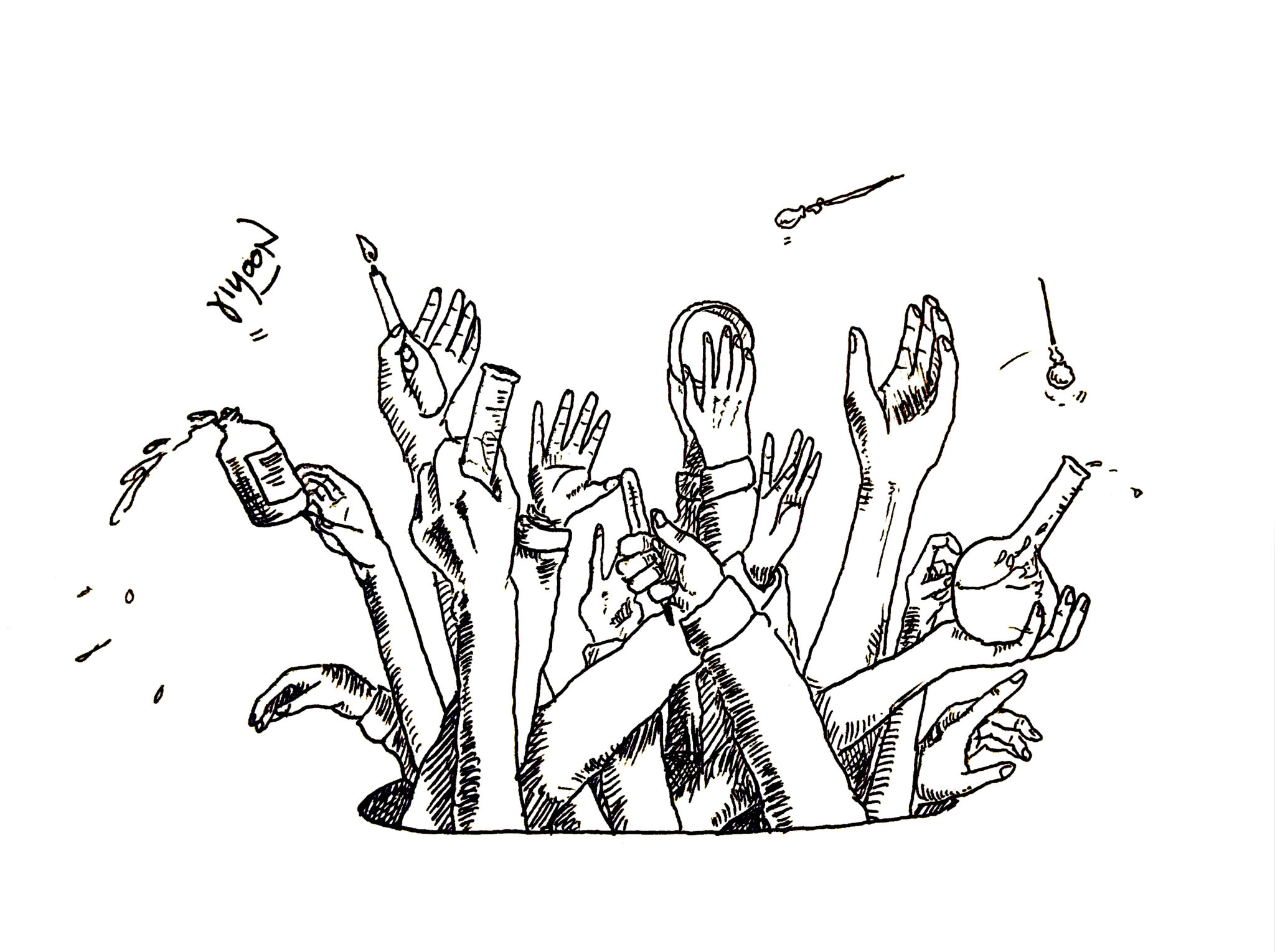
On three Saturdays this fall, students visited Sterling Chemistry Laboratory for science lectures and demonstrations on subjects ranging from quantum physics to molecular, cellular and developmental biology. But these were not Yalies; they were local students, grades K-12 coming, to Yale’s Science on Saturdays program.
Science on Saturdays, a bi-monthly science enrichment program, wrapped up its final event of the fall on Nov. 11.
The program consists of lectures by Yale professors and science demonstrations by Yale undergraduates. The program’s three fall events give students, professors and other local residents the opportunity to come together to share their passion for science.
“Young people are learning about science through hands-on demonstrations and, better yet, from Yale people at all different stages of their education and career,” said Maria Parente GRD ’07, the manager of STEM outreach initiative Yale Pathways to Science. “The excitement is infectious.”
Professors at Science on Saturdays help teach students topics beyond the scope of ordinary high school coursework through hands-on demonstrations. According to Stephanie Smelyansky ’19, the Science on Saturdays organizer, Yalies are able to take apart complex subjects like quantum theory for students in grades K-12 by creating easier-to-understand demonstrations, like plasma balls or homemade motors.
According to Parente, the program was created for students in grades 7 and above to inspire them to pursue STEM in their education and, eventually, their careers.
The purpose of the day, according to Smelyansky, is to expose students to a wide array of topics in science that are both fun and exciting but might not necessarily show up in a class lecture. For example, on Nov. 11, students learned about biomedical engineering.
A typical Science on Saturdays event begins with a lecture by a Yale professor. Chemistry professor Kurt Zilm, who sponsors and organizes the program, chooses lecture topics based on input from Yale students and faculty. This fall, lectures highlighted topics in molecular biology, physics and biomedical engineering.
Zilm said he and his graduate students then develop related demonstrations to be shown throughout the day. For example, demonstrators have used dry ice, soap and water to make holdable bubbles — which can be tossed and held without being popped.
Smelyansky said the demos were very hands-on, showing students that science is more about inquiring and creativity rather than memorizing facts.
According to Smelyansky, who is the president of Synapse, the community outreach branch of the Yale Scientific Magazine, Science on Saturdays has attracted approximately 200 K-12 students to each series. She added that the program draws students and families from all over Connecticut and other nearby areas. This fall, a school in New York City bussed their students to each of the Science on Saturdays events, while others came in from as far as Hartford and Massachusetts to attend the program.
“There are always lots of new faces, but we also have a core group that shows up every time,” Zilm said.
Science on Saturdays has expanded over the past several years, according to Parente, who said she has seen a particularly large increase in local New Haven students’ attendance.
Smelyansky said attendees of the program have the unique opportunity to meet Yale students and faculty members at various stages in their own scientific endeavors, adding that this helps students see that they can grow to become scientists too.
Science on Saturdays worked with students since 2005 and will pick up for the spring term on Feb. 10.
Grace Kang | grace.kang@yale.edu







